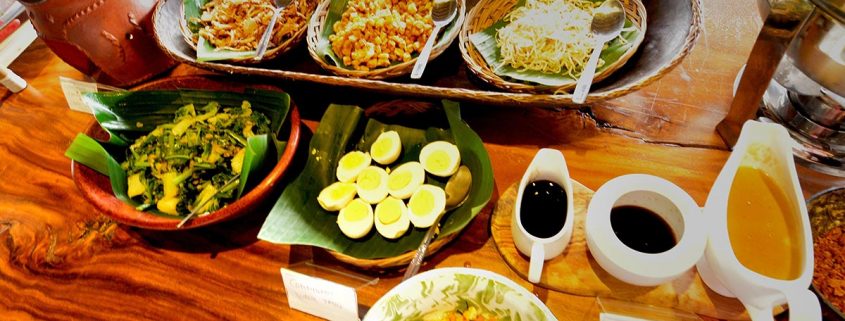The Evolution of Recipes
The evolution of recipes
Embrace the local ingredients when they are at their peak and combine them in a non fuss way to create tasty dishes.
I find Italian cooking a bit scary. I mean, I’m not Italian, nor have I spent more than a few weeks at a time in that glorious country, so I’m not sure if I’m even qualified to practice the art of Italian cooking. However I roll onto a strange and bittersweet Italian vibe every now and then and I walk down memory lane. Submerged in piles of sweet, bright red tomatoes, sprigs of rosemary and one hand on my broken artichoke heart, I find myself weeping over a pot of sorry-for-myself-soup, seasoning this bubbling concoction with salty tears of sorrow. The opera is blasting from the radio, the beans are nearly tender, the aromas are peaking. This could be the minestrone we’ve all been waiting for. Ok, one last taste, one final pinch of cinnamon. WHAT? Cinnamon? I turn around. Italian Mamma is standing behind me. Her face is red like pommidore. Her heart is pounding, her legs are shaking. She’s too quick, 3 hard bashes with her cast iron soup ladle are enough to knock me to the ground. I hear the words, never (!), cinnamon, minestrone before I pass out.
I’ve got a strong love/hate relationship with culture and tradition when it comes to cooking. On one hand, traditional dishes are generally always perfect. I mean, there is a reason why generations of people have eaten a certain combinations of ingredients, cooked in a certain ways, in a certain place at a certain time of the year.
I once was hiking through the Sierra Nevada mountains in southern Spain and found wild rosemary, thyme, honey and sheep. I picked a bunch of each and knocked up a delicious stew in my mountain cottage that evening. Admittedly, I picked up the sheep in the village, but the rest of the ingredients I hunted down with my bare hands.
Clearly, traditional dishes have evolved through using the abundant ingredients of a place in a way that’s delicious and convenient. Since this world is changing rapidly, since a certain man in Scotland now claims to grow bananas in his backyard, I think it’s only fair that we chefs, cooks, and culinary explorers are allowed play around with tradition a little. I wish Mamma would understand!
Let’s consider Italian cooking in a place like Bali. I’m seriously wondering if the number of Italian restaurants are outnumbering the number of temples on the island yet. And only a few of these eateries are truly great. The Tanah Lot’s and the Besakihs of the restaurant world, generally owned by passionate Italians who somehow manage to train their talented Balinese staff to churn out delicious and fairly traditional dishes day in and out. A well meant round of applause to them.
Personally, I’m taking on an Italian attitude to cooking in Bali. Embrace the local ingredients when they are at their peak and combine them in a non fuss way to create tasty dishes. That means I’m usually choosing coconut oil over olive oil, coconut milk over cow milk and cashews over pine nuts. By no means am I trying to replace or recreate. It’s simply about being inspired by a certain dish and adapting it to the local Bali produce market.
Fun story: Balinese take on Dutch classic. I love serving this at Bali Silent Retreat as a light but satisfying finish to a range of straight out of the garden dishes. My mum used to make this thick, rich rice pudding and serve it with sweet apple and cinnamon compote. It’s a heavy dessert which really sorts you out after riding a bicycle through the snow. This version is more suited to a cool evening after a rice field walk. It’s also a lot quicker to make than the ‘traditional’ version.
Rice pudding mousse with crispy jack fruit chips:
- Go down to your local warung and pick up a block of ‘tipat’, basically overcooked rice pressed into a square.
- Chop it into large chunks and throw it into your blender.
- Add 2 cups of coconut milk, and scrape a vanilla pod into it too, along with 3 tablespoons of local sugar or more if you like it sweet.
- Blend at high speed until very smooth.
- In the mean time, whip up some more coconut milk. Yes, this is possible, as long as it is very cold. Also, the higher the fat content, the stiffer your cream will be.
- Fold the whipped coconut cream through your smooth rice mixture and pour into a bowl.
- Chill in the fridge for an hour.
- Get your hands on some sweet, straight of the tree jackfruit.
- Slice the edible, flower like pieces thinly.
- Place slices on an oven tray and bake at 150 degrees until crispy.
- A few spoonfuls of rice pudding mouse into a martini glass, decorated with jack fruit crisps and sprinkled with cinnamon sugar makes a light, classy dessert.




